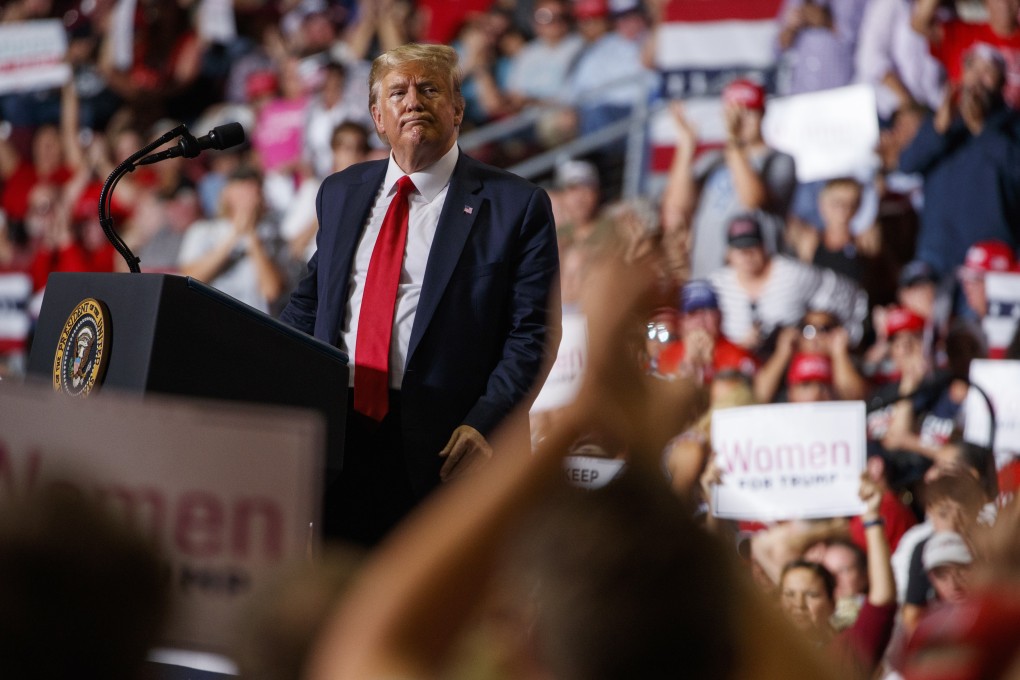Advertisement
Donald Trump is waking up to the fact that ending the trade war with China will help him win in 2020
- The US president has figured he needs a deal with China to soften the economic impact the trade war is having on his voter base, particularly in the key swing states that helped propel him to power in 2016
Reading Time:3 minutes
Why you can trust SCMP
0

The rekindled hopes of a resolution to the trade war may be a reflection of a shift in attitude in the United States: a political calculation in the White House that some form of deal, whether interim or final, needs to be agreed with China to further the prospects of President Donald Trump’s re-election in 2020.
This may seem an odd contention, given that Trump has asserted it is China that needs a deal. But, as economic headwinds related to the trade war increase potential political damage in key states that voted for Trump in 2016, minds may be more focused in Washington.
Meanwhile, Beijing is taking a cautious but constructive approach. “We hope that China and the US can continue to meet each other halfway and take practical steps to create a good environment for talks,” Gao Feng, spokesman for China’s Ministry of Commerce, said last week.
Back in 2016, Democrat Hillary Clinton won 2.9 million more votes than Trump but lost the election as her support was more geographically concentrated. Trump won more states, which was critical for prevailing in the Electoral College and sealing his victory.
Under the US electoral system, voters send 538 representatives from the 50 states plus the District of Columbia to the Electoral College, the meeting where the representatives then pick the president. So the key to taking the White House is securing 270 votes in the Electoral College, rather than winning the popular vote.
In 2016, Trump captured more than 300 votes in the Electoral College. Three states that had gone with Democrat Barack Obama in 2012 swung narrowly to Republican nominee Trump four years later: Michigan by 0.2 per cent, Pennsylvania by 0.7 per cent and Wisconsin by 0.8 per cent.
Advertisement

